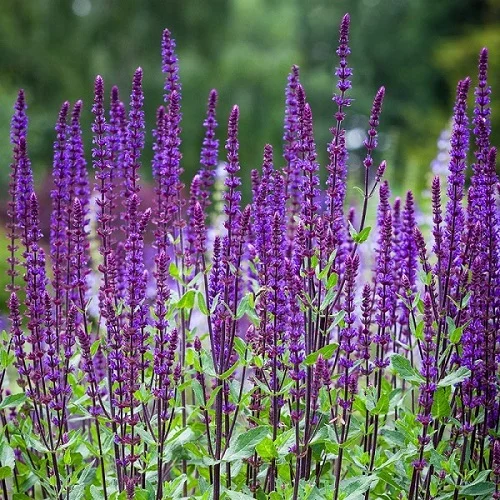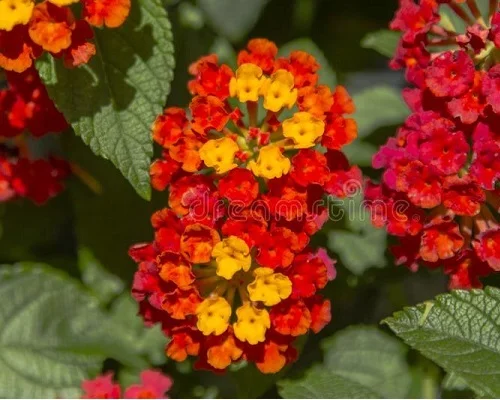Dahlia Plants Care | How to Grow and Care for Dahlias
Some links in this post may be affiliate links
Dahlias are bushy, tuberous, perennial plants in their native regions and in warm regions which are grown as annuals in regions with harsh winter climates.
Dahlia Plants belong to the Asteraceae family formerly Compositae together with Sunflower, Daisy, Zinnia, Aster and Chrysanthemum.
Dahlia was declared the national flower of Mexico in 1963. Dahlias symbolize elegance, change, inner strength, dignity and creativity. It has negative connotations like betrayal, dishonesty and instability.
Dahlias are perennial in USDA Hardiness Zones 8-10 and are annual plants below USDA zones 8.
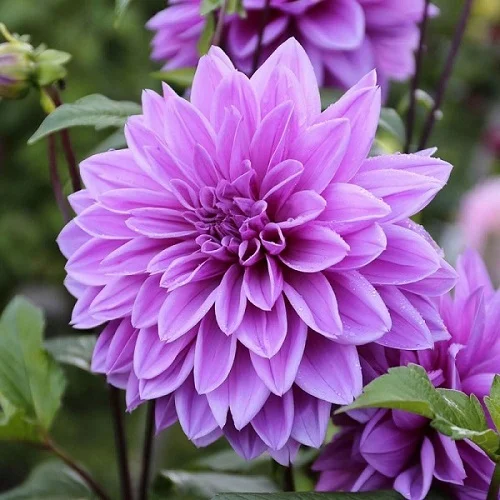
Botanical name: Dahlia
Family: Asteraceae
Common names: Dahlia
Origin
Dahlia Plants is native to Mexico and Central America.
Size
Dahlias grow to a height of 1-8 ft and 1-2 ft wide.
Flowers
Dahlia flowers are one head per stem and vary in diameter from tiny ones about 2 in. wide and dinnerplate ones bout 1 ft wide. They are composite with both central disc florets and surrounding ray florets.
The blooms appear in red, pink, yellow, white, orange and purple from mid-summer to late fall, 8-10 weeks after planting. Dahlias can bloom for a period of 3 months. The flowers are not scented but the bright colors attract pollinators.
Varieties
Dahlias come in many cultivars and hybrids. Most of the plants grown nowadays are hybrids which are more hardy than the mother plants.
Some of the common Dahlia cultivars include;
- Jersey's Beauty: which is 4-6 ft tall and bears 4-6 in. wide pink flowers in fall.
- Kidd's Climax: which 3.5 ft tall and bears 10 in. wide flowers with pink petals suffused with gold.
- Bishop of Llandaff: is a 4 ft tall plant which bears small. scarlet, intense flowers and dark-burgundy foliage.
- Miss Rose Fletcher: bears 6 in. globes of long, quilted, shell-pink petals and grows to a height of 4 ft.
- Bonne Esperance or Good Hope: is a dwarf variety about 1 ft tall which bears 1.5 in. wide, rosy-pink flowers all summer.
- Arabian Night: is 3 ft tall and bears deep maroon, almost black bloom.
- Radar: is 5 ft tall and bears deep plum-purple petals tipped in white.
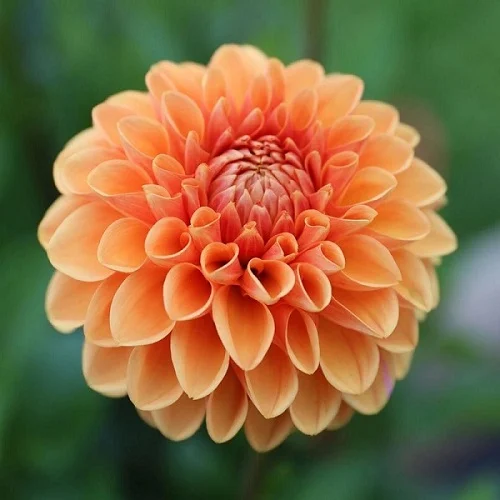
Dahlia Plant Care
Dahlias grow best in full sunlight of 6-8 hours per day, constantly warm conditions and moderately moist, well-drained soil that is rich in organic matter to promote lush growth.
Dahlia Plants requires timely pruning to keep the plant neat, to promote branching, to encourage blooming and to minimize pest and disease infestations as it improves aeration.
Light Requirements
Dahlias thrive in in full sunlight of 6-8 hours per day through out the growing season to boost growth and promote blooming. Grow the plants away from windy conditions and from intense, direct afternoon sunshine as it can scorch the leaves.
Water Requirements
In the early stages growth, water the young Dahlias regularly to maintain the soil moist until the plants are well established.
Once established, Dahlia Plants will not require very frequent watering. Water the established moderately during the growing season while allowing the soil dry out between waterings.
Keep the soil moist to boost blooming. To retain soil moisure and also minimize growth of weeds, apply a mulch on the soil surface.
Avoid overwatering or soggy soil as it can lead to rotting. Also apply water at the soil surface to avoid wetting the foliage as it can result in powdery mildew.
Temperature and Humidity
Dahlia requires constantly warm temperatures. Avoid growing Dahlia Plants in windy conditions to prevent sudden flactuations in temperatures which can lead to flower bud drop. Keep it sheltered against cold winter winds.
Soil
The best soil for Dahlia Plants should be consistently moist, free-draining, rich in organic matter, at a PH of 6.0 to 7.5. Use a soil PH meter to confirm that the PH is within this range.
If the PH is not within the recommended range, it should be ammended. To increase PH (if it is too acidic), add lime to the soil. To decrease PH (if it is too alkaline), add soil sulphur. Allow a 2 weeks period for the soil to correct the PH.
Where the soils are clay, add aged manure to lighten and loosen it inorder to improve drainage and prevent soggy soil.
Fertilizer
Feed Dahlias with a phosphourous-rich, fertilizer every 3-4 weeks after sprouting to early fall to promote flower production.
Do not overfertilize Dahlia Plants or fertilize with nitrogen-rich fertilizer as it can lead to reduced blooming, weak tubers and rotting.
Where to Buy Dahlia Plants
Dahlia tubers and seeds are available online on Etsy (Link to Etsy).
Starting Dahlia Seeds
Start Dahlia seeds indoors, 10-12 weeks before the last frost.
Fill a seed starting tray with seed starting mix and sow the seeds about 1/4 in. deep in the soil, closer to the edge of the container than to the center as it enhances establishment.
Place the set up close to a sunny window or instal a grow light to hasten growth and development.
Maintain the soil moist through out but avoid soggy soil as it can lead to rotting.
Once germinated, allow the seedlings to develop one true set of leaves before transplanting into individual pots.
Transplant the seedlings outdoors in spring when the temperatures are adequately warm and the danger of frost has passed.
When to Plant Dahlia in the Ground
The best time to plant Dahlias in the ground is in spring after the threat of frost has passed and the soil has warmed up enough to 18-210C (65-750F).
How to Plant Dahlia Tubers in the Ground
Dig up the soil to a depth of about 10-12 in. to loosen it and get rid of all the weeds and other debris from the soil.
Prepare planting holes 6-8 in. deep and incorporate a handful of well decomposed manure in each hole.
Spacing:
- Large Dahlia Plants: 3 ft apart
- Medium to low height Dahlias: 2 ft apart
- Bedding Dahlias: 9-12 in. apart
Select tubers with pink buds 'eyes' or a little bit of green growth.
Place the tuber in the hole with the growing points 'eyes' facing up.
Cover the tuber with 2-3 in. of soil. As the stem sprouts, fill in the hole with soil until it is at the ground level.
To prevent the tubers from rotting, do water right after planting but wait until the sprouts have appeared above the soil level.
Do not apply a mulch as Dahlias prefer sun on their roots and also because mulches encourage slugs.
To keep tall varieties upright, stick 5-6 stakes around the plants and tie the stems to the stakes as the plants grow.
Blooming will begin about 8-10 weeks after planting the tubers.
Overwintering Dahlias
Dahlias are hardy in USDA Zones 8-10 and other warm climates where they are grown as perennials. In USDA Zones below 8 and other areas with harsh winters, Dahlias are grown as annuals where the tubers are dug up, stored indoors over winter and replanted in spring.
After the first frost, cutback the Dahlia Plants to 4 in. above the ground and leave the tubers in the ground for 1 week before digging them up.
Carefully lift the tubers while taking care not to damage the tubers and clean off excess soil.
Allow the rootball to air dry in a cool place away from frost and direct sunlight.
Carefully seperate the tubers and store them individually in saw dust in a cool, dark, humid place with temperatures between 40-550F but do not freeze.
Container-grown Dahlias
Where the conditions are not favourable for growing Dahlias in the ground like in areas with harsh winters, you can grow the plants in containers.
Doing so allows you to move the plants indoors when the conditions are harsh in winter and take them back outside in spring when the temperatures are sufficiently warm.
The best Dahlias for growing in pots are the medium to dwarf varieties. Tall varieties require to be staked to keep them upright.
A 12 X 12 in. container should be adequate. Confirm that the container has adequate drainage holes to prevent the soil from getting soggy to prevent rotting of the tuber.
Fill the container up to about 6 in. below the rim with free-draining, fertile soil and place the tubers in the pot with the growing points 'eyes' facing up.
Cover the tuber with 1-2 in. of soil. As the stem sprouts, fill in the pot with soil while leaving 1 in. from the rim unfilled to facilitate watering.
To prevent the tubers from rotting, do water right after planting but wait until the sprouts have appeared above the soil level.
Thereafter, maintain the soil moderately moist during the growing season while allowing the soil to dry out to the bottom of the tuber between waterings.
Pruning Dahlias
Pruning Dahlias involves pinching off 3-4 in. of the center branch to encourage branching and bushier growth.
To encourage growth of large flowers, remove the 2 smaller buds next to the central one in the flower cluster. This causes the plant to direct its energy to the development for large blooms.
For bedding Dahlias, pinch out the center shoot just above the 3rd set of leaves to promote bushyness.
Remove dead flowers as they fade to keep the plant neat and tidy as well as keep the plants blooming for months.
Propagation
Dahlia Plants can be propagated from cuttings.
How to propagate Dahlias from Cuttings
Sprout Dahlia tubers in late winter or early spring. After the tubers have sprouted and have grown at least 3 in. tall, make a cut just below the sprout and partially into the tuber.
Fill a pot(s) with well-drained, fertile soil and make 3-4 holes along the edge of the pot to hasten establishment of the Dahlia cutting.
Trim off the lower leaves and dip the cut end of the cutting in a rooting hormone to encourage rooting.
Place the cuttings in the small holes along the edge of the pot and cover the cuttings with soil.
Water the soil thoroughly until water comes out through the drainage holes.
Place the set up next to a sunny window or instal a grow light for faster establishment.
Maintain the soil moist through out and in 2-3 weeks the cutting should have rooted.
Once the the Dahlia Plants are well established and the soil has warmed up enough, plant the seedlings outdoors.
How to Promote Blooming in Dahlias
Keep the soil moist but not soggy. Do not allow the soil to become saturated or too dry out completely. Apply a mulch to retain moisture.
Ensure that the Dahlia Plants receives full sunlight for 6-8 hours daily. However, grow the plants away from intense sunlight.
Fertilize Dahlias with a phosphourous-rich, fertilizer every 3-4 weeks after sprouting to early fall to promote flower production.
Keep tall Dahlia Plants upright by sticking 5-6 stakes around the plant and tying the stems to these stakes as the plant grows.
How to Harvest in Dahlias
Dahlias are perfect candidates for cutflowers due to their large size and vibrant colors. At the same time, harvesting Dahlias encourages branching and more blooms.
When the Dahlias flowers are almost fully open, they are ready for harvesting.
The best time to harvest Dahlias is in the morning before the sun is hot (before they start wilting) to improve the keeping quality.
Cut the stems at the base and get rid of the small side shoots.
Place the stems in 2-3 in. of hot water to seal them off and wait for the water to cool off.
Remove the bottom leaves and place the cutflowers in a vase of fresh water.
Change the water daily to keep it fresh. The vase life of Dahlias is about 7 days.
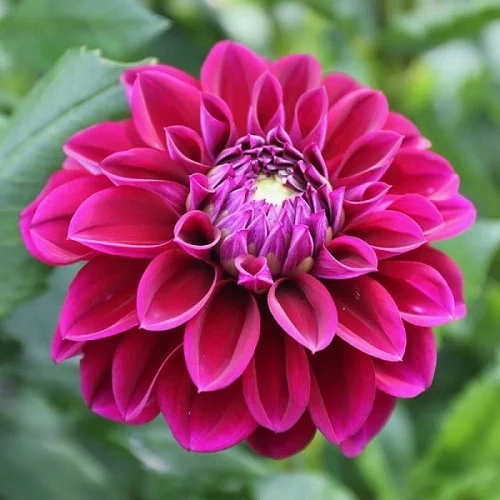
Dahlias Problems
JDahlia Plants problems include yellow leaves, stem rot, wilting flowers, pests and diseases among others. Keep reading for more on these problems and how to solve them.
Yellow leaves
Yellow leaves in Dahlias is caused by overwatering or soggy soil and may be accompanied by crispy flowers.
Soggy soil will kill the roots first which means the plant cannot take up water and nutrients to the leaves. Thus, the plant starts dying from the leaves which turn yellow.
Reduce watering and ensure that the soil is free-draining to prevent it from becoming saturated or soggy. For potted plants make sure that the pot has adequate drainage.
Stem rot
Stem rot in Dahlias is brought about by soggy soil, poorly drained soil. If the soil is clay, improve drainage by incorporating fully decomposed organic matter.
Ensure that the soil is well-drained to prevent it from becoming soggy. For potted plants make sure that the pot has adequate drainage.
Wilting flowers
Wilting flowers in Dahlias is caused by underwatering especially in the hot season (summer). Dahlias require the soil to be maintained moist.
Water Dahlias moderately during the growing season while allowing the soil to dry out slightly between waterings but do not let the soil dry out completely.
Pests
Common pests in Dhalias are aphids, thrips, slugs, caterpillars, earwigs and spidermites. Spray the plant with an insecticidal soap or neem oil to get rid of the pests. Make sure to follow the manufactuers recommendations.
Diseases
One of the most common diseases in Dahlia Plants is powdery mildew is a fungal disease characterized by spotting or coating of the leaf surface with a white powdery deposit.
Powdery Mildew is prevalent in warm humid conditions and results in disfigured leaves. In severe cases it can spread to the stems and flowers of the plant.
Remove the badly affected leaves and discard or burn to reduce spread to other parts of the plant.
Improve the air circulation by proper spacing as doing so reduces the occurrence of Powdery Mildew.
Avoid wetting the foliage during watering. Water the plants at the soil level and do not water by overhead irrigation.
Spray the plant with a systemic fungicide. Ensure all the parts of the plant are completely covered with the fungicidal solution.
Alternatively, lightly dust the leaves with a sulphur compound used for this purpose. Ensure the leaves are well covered with the sulphur compound.
The second disease in Dahlia is gray mold on tubers. One of the best way to deal with this disease is to start plants from tubers sourced from reliable sources every year.
Gray mold in Dahlia tubers can also be prevented by rotation every three years. The disease can remain in the soil for a long time, therefore, do not plant Dahlias in the same are for more than three years.
You liked it? Share on social media.
Related Content
Amazon Associates Disclosure
Homeplantsguide.com is a participant in the Amazon Services LLC Associates Program, an affiliate advertising program designed to provide a means for sites to earn advertising fees by advertising and linking to amazon.com.

